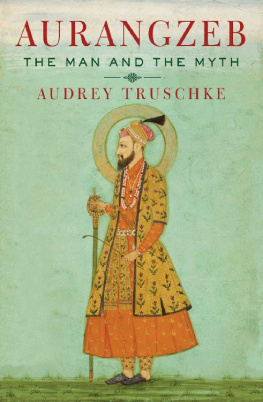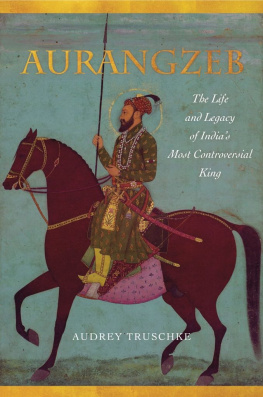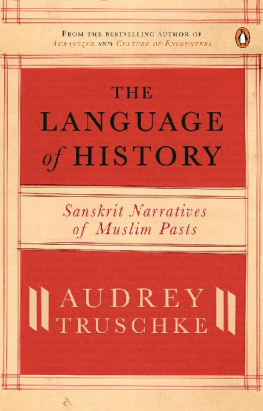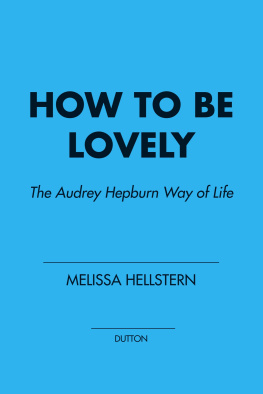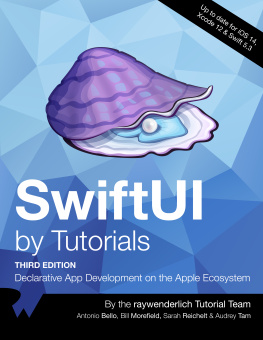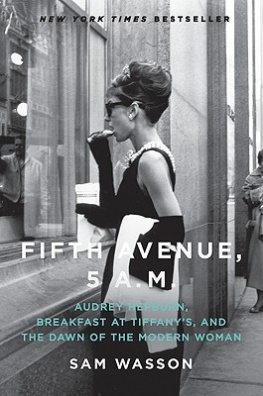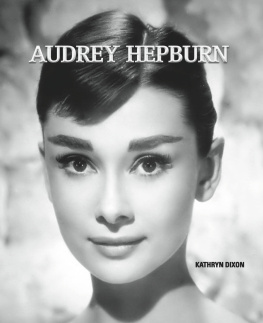Audrey Truschke - Aurangzeb: The Man and the Myth
Here you can read online Audrey Truschke - Aurangzeb: The Man and the Myth full text of the book (entire story) in english for free. Download pdf and epub, get meaning, cover and reviews about this ebook. year: 2017, publisher: Random House Publishers India Pvt. Ltd., genre: History. Description of the work, (preface) as well as reviews are available. Best literature library LitArk.com created for fans of good reading and offers a wide selection of genres:
Romance novel
Science fiction
Adventure
Detective
Science
History
Home and family
Prose
Art
Politics
Computer
Non-fiction
Religion
Business
Children
Humor
Choose a favorite category and find really read worthwhile books. Enjoy immersion in the world of imagination, feel the emotions of the characters or learn something new for yourself, make an fascinating discovery.
- Book:Aurangzeb: The Man and the Myth
- Author:
- Publisher:Random House Publishers India Pvt. Ltd.
- Genre:
- Year:2017
- Rating:5 / 5
- Favourites:Add to favourites
- Your mark:
- 100
- 1
- 2
- 3
- 4
- 5
Aurangzeb: The Man and the Myth: summary, description and annotation
We offer to read an annotation, description, summary or preface (depends on what the author of the book "Aurangzeb: The Man and the Myth" wrote himself). If you haven't found the necessary information about the book — write in the comments, we will try to find it.
Aurangzeb: The Man and the Myth — read online for free the complete book (whole text) full work
Below is the text of the book, divided by pages. System saving the place of the last page read, allows you to conveniently read the book "Aurangzeb: The Man and the Myth" online for free, without having to search again every time where you left off. Put a bookmark, and you can go to the page where you finished reading at any time.
Font size:
Interval:
Bookmark:



PENGUIN BOOKS

PENGUIN BOOKS
Culture of Encounters: Sanskrit at the Mughal Court
(Harvard Art Museums/Arthur M. Sackler Museum, Gift of Stuart Cary Welch, Jr, 1999.298 )
(Freer Gallery of Art, Purchase: Charles Lang Freer Endowment, F1996.1)
(Picture by author)
(Metropolitan Museum of Art, New York, Bequest of George D. Pratt, 1935, 45.174.28)
(Mead Art Museum, Amherst College, Gift of Dr and Mrs Frank L. Babbott [Class of 1913], AC 1963.4)
(Anne S.K. Brown Military Collection, Brown University Library)
(Metropolitan Museum of Art, New York, Louis V. Bell Fund, 2003, 2003.430)
(Metropolitan Museum of Art, New York, Rogers Fund, 1925, 25.138.1)
This book began with a Twitter message asking if I wanted to write an accessible biography of one of the Mughal kings. The discussion quickly migrated to email, and I settled on Aurangzeb Alamgir as the subject. That this book was first formulated via social media is appropriate because the Aurangzeb fever that has gripped modern India often surfaces most virulently on platforms such as Twitter and Facebook. In this short biography I address Aurangzebs vibrant, ongoing presence in popular culture. From a historians point of view, however, Aurangzeb is first and foremost a Mughal king about whom most people know lamentably little. This book is an attempt to introduce the historical Aurangzebin all of his complexityto a wide readership.
For the sake of narrative flow and ease of reading, the text is presented without footnotes. It is already difficult to get at Aurangzebs life and ruling strategies, and notes would have posed yet another obstacle. Readers who want to know my sources will find the information in the Bibliographical Essay and the Notes. The Postscript will interest those who desire to learn more about how historians think about the past and analyse premodern sources.

I owe many debts of gratitude in writing this short book. I profusely thank my many colleagues who shared unpublished work, assisted with images, and read earlier drafts of the manuscript. All opinions, arguments, and errors in the book are mine alone.
Writing about Aurangzeb, one of the most hated men in Indian history, is no light decision, and I owe a special acknowledgement in this regard. My heartfelt gratitude to those who advised me to write the book when I wavered about whether to do soyou know who you are, and I am much obliged.
Readers will find the following text free of footnotes and diacritics. I detail my sources in the Bibliographical Essay and the Notes. I use non-English words and names in their most common Romanized form and generally omit special characters.
| 1618 | Aurangzeb is born |
| 1633 | Aurangzeb faces a mad elephant |
| 1634 | Aurangzeb celebrates his coming-of-age ceremony |
| 1637 | Aurangzebs first wedding |
| 165354 | Aurangzebs romance with the musician Hirabai |
| 1657 | Dilras Banu Begum, Aurangzebs wife, dies |
| 1657 | Shah Jahan falls ill, and the war of succession begins |
| 1658 | Aurangzebs first coronation ceremony |
| 1659 | Aurangzebs second coronation ceremony |
| 1659 | Dara Shukoh executed |
| 1661 | Murad Bakhsh executed |
| 1663 | Raja Raghunatha dies |
| 1666 | Shah Jahan dies |
| 1666 | Shivaji flees from the Mughal court |
| 1667 | Fatawa-i Alamgiri begun |
| 1669 | Public darshans of the emperor discontinued |
| 1669 | Benaress Vishvanatha Temple destroyed |
| 167374 | Construction completed on Badshahi Masjid in Lahore |
| 1675 | Tegh Bahadur executed |
| 167980 | RathorSisodia Rebellion |
| 1679 | Reinstatement of the jizya tax |
| 1679 | Hindu representation in Mughal nobility begins to rise |
| 1680 | Shivaji dies |
| 1681 | Prince Akbar rebels |
| 1681 | Aurangzeb moves to the Deccan |
| 168586 | Siege of Bijapur |
| 1687 | Fall of Golconda |
| 1689 | Sambhaji executed |
| 1698 | Fall of Jinji (Gingee) |
| 1704 | Prince Akbar dies in exile |
| 1704 | Jizya tax remitted for the Deccan |
| 1705 | Amar Singh dedicates Persian Ramayana to Aurangzeb |
| 1707 | Aurangzeb dies |

I came as a stranger, and I leave as a stranger.
Aurangzeb, letter written on the verge of death
When the Mughal emperor Aurangzeb looked back at his life in 1707 at the ripe age of eighty-eight, he saw failure.
From his deathbed Aurangzeb penned several poignant letters to his sons voicing his gravest fears, including that God would punish his impiety. But, most of all, he lamented his flaws as a king. To his youngest son, Kam Bakhsh, he expressed anxiety that his officers and army would be ill-treated after his death. To his third son, Azam Shah, he admitted deeper doubts: I entirely lacked in rulership and protecting the people. My precious life has passed in vain. God is here, but my dimmed eyes do not see his splendour.
Aurangzeb ruled for forty-nine years over a population of 150 million people. He expanded the Mughal Empire to its greatest extent, subsuming most of the Indian subcontinent under a single imperial power for the first time in human history. He made lasting contributions to the interpretation and exercise of legal codes and was renownedby people of all backgrounds and religious stripesfor his justice. He was quite possibly the richest man of his day and boasted a treasury overflowing with gems, pearls, and gold, including the spectacular Kohinoor diamond. But these accomplishments failed to assuage his angst about his political deficiencies in his final days.
To both Azam Shah and Kam Bakhsh, Aurangzeb also confessed his religious shortcomings and the bitter divine judgement he believed he would soon face. A devout Muslim, he thought that he had chosen isolation from God, both in this life and the next. And while he came into the world unburdened, he flinched at the idea of entering the afterlife saddled with the weight of his sins. He ended his final letter to Azam with an evocative, lingering flourish, pronouncing his farewell thrice, Goodbye, goodbye, goodbye.
Font size:
Interval:
Bookmark:
Similar books «Aurangzeb: The Man and the Myth»
Look at similar books to Aurangzeb: The Man and the Myth. We have selected literature similar in name and meaning in the hope of providing readers with more options to find new, interesting, not yet read works.
Discussion, reviews of the book Aurangzeb: The Man and the Myth and just readers' own opinions. Leave your comments, write what you think about the work, its meaning or the main characters. Specify what exactly you liked and what you didn't like, and why you think so.

